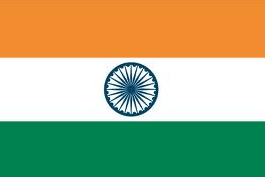Delhi’s hard-working and massive suburb of Gurgaon is a dangerous place to be a woman, and judging from a number of recent and highly-reported rapes and gang rapes, it’s only getting worse. Sexual violence- and the ham-fisted legislation proposed by regional governors to address it – has sparked soul-searching debate online and in the press over rape law and the prevalence of sexual assault in supposedly swiftly-modernizing India.
Gurgaon officials and local police could have responded to these rapes with increased surveillance and tougher laws – but they didn’t. They chose the easy way out, advising women to avoid working after 8:00 PM for their own protection, and forcing employers to seek Labor Department permission to allow female employees to work in the evening. It’s a blame-the-victim maneuver that is sadly common around the world and it’s drawn the ire of many forward-thinking Delhi citizens,who have organized marches, protests, and other demonstrations against the measure.
Not that police appear to have noticed. Gurgaon’s commissioner of police told the New York Times that he “did not think women’s safety was an issue” in the area and called a recent rape a “peculiar” case, statements that speak volumes about how seriously local police are taking the problem.
But many in Delhi didn’t view the rape as “peculiar,” or as an unfortunately isolated incident. Ranjani Raghunathan, writing at Make Delhi Safe : “They [the youth of Delhi NCR] didn’t see the rape as just an incident of crime; what they saw was a shocking reflection of the society as a whole, where pulling a woman out of a car and raping her is so very easy, and for that same woman to get justice, is tremendously difficult.”
“My first reaction, of course, is how easy it is for society (the authorities are reflecting a larger social attitude) to ask women to behave ‘within limits’. Just like recent incidents in which airline staff asked people with disabilities to deplane, the attitude reeks of a mindset in which women are considered weak, disadvantaged and mostly a problem.”
The blogger is right: these restrictions portrays women less as responsible adults who have a right to safety, and more as liabilities of limited value in the workplace. From an employers perspective, new restrictions on female employees who work after 8:00 PM may make them think twice about hiring more women in the future. It’s a classic gambit: denying women economic and financial power in the name of their own “safety.” But the municipality has had little to say about the cause of the problem: men who think gang-raping women is acceptable, and, more importantly, feel confident they can get away with it.
And why wouldn’t they?
As bloggers and journalists have pointed out, India is still far behind the times when it comes to justice for rape victims. Although rape reportage has risen since the 1970s, when data first began to be collected, convictions have declined in proportion (as have convictions for other hard-to-solve crimes, including murder, indicating that a lack of resources and sheer police laziness is to blame).
It’s not just the police, however- it’s culture. Blame-the-victim mentalities are still the norm in both the media and among police, as noted by Lakshimi Chaudry in the Times of India, who observed news stories on rape victims in India focus overwhelmingly on the age, appearance, and behavior of the victim, instead of on the perpetrators themselves. Laws that prevent the public identification of rape victims are also routinely flouted by police and the media, making women even more reluctant to report sexual crimes to authorities.
Beyond violent sexual assault, Indian women must deal on a daily basis with sexual harassment, (often called, entirely too cutely, “eve teasing”) an extremely common male pursuit that forces women to run a hostile gauntlet whenever they leave the house. A 2011 study rated India as fourth from the bottom world-wide when it came to threats against women, in the same dubious company as Afghanistan, Democratic Republic of Congo, and Pakistan. Meanwhile, data from India’s National Crime Records Bureau shows India’s northeastern states, where women generally have higher social and economic status than in the rest of India, also have much higher rape conviction and reporting rates.
The correlation is clear. Give women more social status and economic power and eve-teasing, rape, and sexual harassment will fade in frequency.
